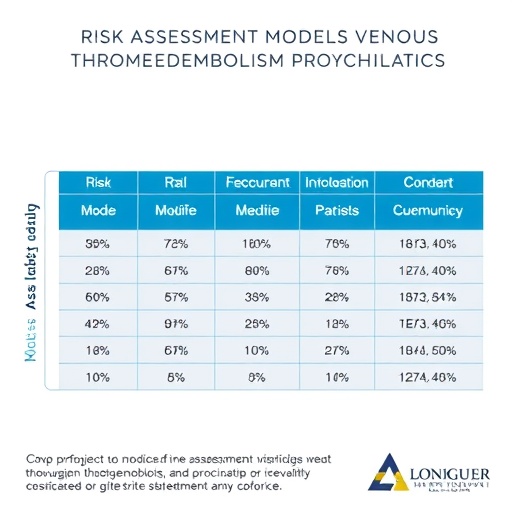Harnessing Technology to Revolutionize Primary Care Screening: Putting Patients at the Heart of Innovation
In the ever-evolving landscape of healthcare, the integration of advanced technology into primary care promises to redefine how diseases are detected, managed, and ultimately prevented. A recent compilation of studies featured in The Annals of Family Medicine underscores the transformative potential of digital tools—especially artificial intelligence (AI)—in enhancing screening processes. However, amid the technological optimism lies a common and critical theme: successful innovation in primary care hinges on centering these tools around the unique needs and contexts of patients, while augmenting rather than supplanting the clinician’s role.
One pivotal editorial in this issue advocates that digital health initiatives must embrace a patient-first approach. Technology, particularly AI, offers remarkable capabilities—such as triaging electronic visits, rapidly flagging urgent conditions, and synthesizing complex physiological data—but these advances only bear fruit when seamlessly integrated within the clinician-patient relationship. Clinicians act as navigators through the health system’s complexities, interpreting technological outputs within the nuances of individual patient narratives. Crucially, this symbiosis respects the irreplaceable human elements of trust, empathy, and shared decision-making that technology alone cannot replicate.
.adsslot_yqomHlJ3wW{ width:728px !important; height:90px !important; }
@media (max-width:1199px) { .adsslot_yqomHlJ3wW{ width:468px !important; height:60px !important; } }
@media (max-width:767px) { .adsslot_yqomHlJ3wW{ width:320px !important; height:50px !important; } }
ADVERTISEMENT
As primary care faces systemic challenges of workforce shortages and rising patient demands, understanding evolving practice patterns offers insight into where technology might best be applied. In Ontario, Canada, a longitudinal study reveals a significant shift among family physicians towards focused practice areas such as emergency medicine and addiction care, with a noticeable decline in comprehensive care providers on a per capita basis. This shift presents nuanced implications for screening strategies. Focused practitioners may have less opportunity or mandate for broad early detection efforts, highlighting a growing need for scalable technological interventions that bolster comprehensive primary care capacity and accessibility.
The exploration of AI’s role in electronic visits (eVisits) represents one of the most immediate arenas where technology intersects with daily primary care workflows. Investigators in the United Kingdom elicited perspectives from both patients and staff on AI-enabled enhancements to eVisits. Initial apprehension was common, with concerns about depersonalized care and data privacy balanced against hopes for more timely responses and reduced staff workload. Notably, seven pragmatic AI applications emerged as promising adjuncts: efficient workflow routing, emergency redirection, urgent request prioritization, intelligent follow-up queries, response drafting assistance, self-help resources dissemination, and automated booking of in-person visits where necessary. Importantly, respondents emphasized that AI should serve as a clinician’s tool rather than an autonomous decision-maker, reinforcing the ethos of partnership rather than replacement.
Geographic and social determinants remain fundamental barriers to equitable access in primary care, an issue further illuminated by a detailed examination of Virginia’s diverse populations. Nearly half of census tracts suffer from inadequate primary care physician (PCP) availability within a 30-minute drive, with rural location exerting the strongest negative influence. Paradoxically, racially segregated tracts with higher proportions of Black residents showcased greater physician access than predominantly white areas, challenging simplistic assumptions and prompting deeper inquiry into systemic factors. These findings underscore that technology-driven screening solutions must be contextualized within broader efforts to address structural inequities and health system planning.
In tandem with geographical disparities, the challenge of polypharmacy among seniors introduces complex clinical decision-making dynamics. A Japanese qualitative study delved into older adults’ receptivity to deprescribing—a strategy to reduce unnecessary medications—revealing that patient willingness is shaped by trust, personal attitudes towards medication, and involvement in decision-making. Tailoring deprescribing initiatives, potentially supported by digital tracking tools and decision aids, will require nuanced appreciation of patient typologies ranging from proactive to risk-averse, thereby preventing one-size-fits-all approaches.
Cardiovascular disease screening illustrates the convergence of AI innovation and primary care potential. Using AI-enhanced electrocardiograms and digital stethoscopes, researchers demonstrated high negative predictive values in detecting left ventricular systolic dysfunction among women contemplating pregnancy. These non-invasive, rapid screening tools could feasibly scale to routine visits, enabling early detection of conditions that might otherwise remain asymptomatic until advanced. Such advancements epitomize how AI can extend diagnostic capabilities beyond traditional specialist settings and empower primary care clinicians with precise, actionable insights.
Similarly, hearing impairment—a prevalent yet frequently underdiagnosed condition—may soon benefit from the incorporation of app-based screening within family medicine practices. French investigators validated the feasibility of tablet-based audiometric tests administered during regular visits, which identified a significant proportion of patients with hearing loss warranting specialist referral. Although patient follow-through remained a challenge, the approach offers an accessible, cost-effective pathway to bridging diagnostic gaps using technology embedded in primary care workflows.
Beyond diagnostics, the broader ecosystem of global health research reveals persistent inequities embedded within authorship patterns. Studies published in high-income country family medicine journals disproportionately feature senior authors from those same countries, particularly in research conducted in low-income settings. This imbalance underscores systemic barriers to equitable knowledge leadership and the ethical imperative of fostering inclusive collaborations that reflect and honor local expertise.
Underpinning these technological and systemic discussions is an ethical reflection on clinical labeling, particularly concerning patient adherence. Labeling patients as “nonadherent” often obscures the clinician’s role in interpreting behaviors and disregards structural impediments such as socioeconomic factors or systemic racism. This diagnostic shorthand carries profound implications, as it may perpetuate stigma, bias care decisions, and ultimately worsen outcomes. Recognizing adherence labels as social constructs invites more compassionate, context-aware clinical engagement.
Amidst the complex interplay of technology, ethics, and patient care, innovations at the community level demonstrate the power of low-cost, human-centered interventions. An example from rural Minnesota highlights how strategically placed little free libraries stocked with mental health resources can enhance community access to wellness information. Such initiatives complement high-tech solutions, reinforcing that addressing healthcare disparities demands multifaceted approaches grounded in empathy and accessibility.
Ultimately, this collection of research and reflective essays converges on a central truth: the promise of technology in primary care hinges less on gadgets or algorithms alone and more on thoughtful integration that preserves the human connection. Modern healthcare must resist the siren call to prioritize speed and efficiency at the cost of relationship-building. Embracing depth, presence, and attentive listening remains paramount, as exemplified by physicians who find inspiration in art and narrative to deepen their empathy and observational skills. Likewise, integrating nuanced understanding of ethnicity and genetic ancestry into clinical decisions can safeguard patient safety and advance personalized medicine.
As the primary care frontier embraces AI, digital assessments, and data-driven tools, it remains imperative that these innovations function as extensions of human insight rather than replacements. This balanced approach will optimize patient experience, enhance clinician well-being, and drive equitable, high-quality care for all populations. The future of primary care is not only about smarter machines but, fundamentally, about honoring the complexity and dignity of the people at its heart.
Subject of Research: Integration of Technology and Artificial Intelligence in Primary Care Screening and Health Equity
Article Title: Harnessing Technology to Revolutionize Primary Care Screening: Putting Patients at the Heart of Innovation
News Publication Date: May 27, 2025
Web References: [Permanent links available through The Annals of Family Medicine]
References: Studies published in The Annals of Family Medicine, May 2025 issue
Image Credits: Not provided
Keywords: Primary care, Artificial intelligence, Screening, Digital health, Health equity, Cognitive assessment, Deprescribing, Health disparities, Patient-centered care
Tags: advanced disease screening toolsartificial intelligence in healthcareclinician-patient relationship enhancementdigital health initiativesempathetic healthcare solutionshealthcare workforce challengesnavigating complex health systemspatient-centered healthcare innovationpatient-first approach in medicineprimary care technology integrationtechnology in primary care managementtransforming healthcare with AI





